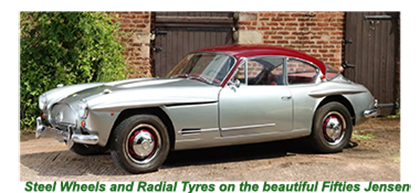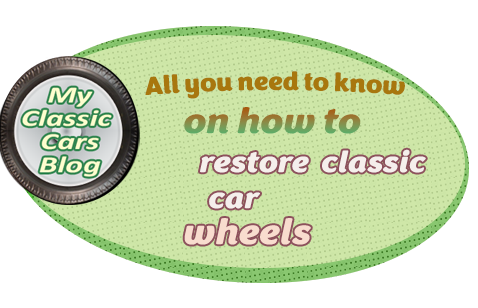 During the immediate post-war years going deep into the Fifties, UK and European cars were, in the majority, designed with an eye towards functionality with raw materials still in short supply.
During the immediate post-war years going deep into the Fifties, UK and European cars were, in the majority, designed with an eye towards functionality with raw materials still in short supply.
Most leading mass producers paid scant attention to wheels and tires, with only an elite few, particularly Jaguar, MG and Sunbeam, fitting some of their models with exquisite chrome wire wheels.
The rest of the pack were happy to fit their vehicles with standard steel rim wheels- the outer circular edge of the wheel on which tires are mounted.
Steel wheels have been around since the early Twenties, its arrival causing the very welcome demise of the Bibendum style rim.
Although they have been continuously updated over the years, the basic design is still used today in mass-produced vehicles. However, quality and innovation have improved dramatically over the years.
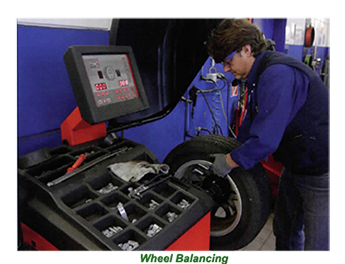 It took a few decades or more for the vehicle buying public to figure it out.
It took a few decades or more for the vehicle buying public to figure it out.
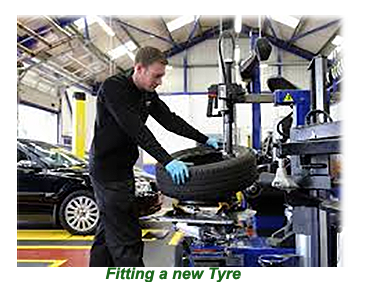 Still, when the penny dropped, the realisation crept in that while buying a car fitted with steel wheels kept the original ticket price down a little, they would make up the difference through dramatically reduced fuel costs over just a few years.
Still, when the penny dropped, the realisation crept in that while buying a car fitted with steel wheels kept the original ticket price down a little, they would make up the difference through dramatically reduced fuel costs over just a few years.
Metal wheels are disproportionately heavy, especially compared to the alloy and aluminium wheels currently on the mark, which also look a lot better.
While alloy and aluminium wheels were rarely found in the Fifties and Sixties, what could really make a UK luxury vehicle stand out from their US or European counterparts was those fitted with chrome wire wheels – spectacular in the extreme.
Not only extremely classy but much lighter than metal wheels, the downside was that chrome wheels were much more expensive.
Nonetheless, more than enough car lovers around the world were ready and willing to fork out the extra for a car that really stood out from the crowd.
![]()
When checking out a vehicle with a view to restoration, inspecting the state of its wheels and tyres might well be considered secondary in importance.
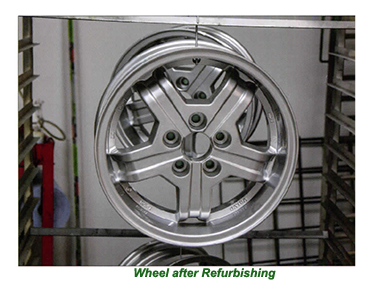 If the car has simple metal wheels, they should be checked for any damages or dents. If everything is in order, all that should be required is a simple coat of paint to get them back into as good a condition as they are ever likely to be.
If the car has simple metal wheels, they should be checked for any damages or dents. If everything is in order, all that should be required is a simple coat of paint to get them back into as good a condition as they are ever likely to be.
At this point, many restorers decide to make the wise decision to upgrade to either lightweight aluminium or magnesium alloy wheels- a move that will enhance the car’s appearance and give it a completely different stance.
If the vehicle is fitted with original chrome wire wheels, restoring them, if need be, can be a very challenging project- and one that would almost be impossible to handle in-house.
Wire wheels, over the years, will have begun to wear, especially around their splines.
Splines are the groove on the inside of the wheel that holds the spokes.
Challenging to repair as all the spokes will have to come out, renewing wire wheels is a job for an expert- and a patient one at that. If the spline and the splined nub are in order, broken spokes have to be dealt with – and they can number up to sixty on each wheel.
![]()
There have been few developments in design or production methods over the years, with cross plys remaining the tyre of choice for tires.
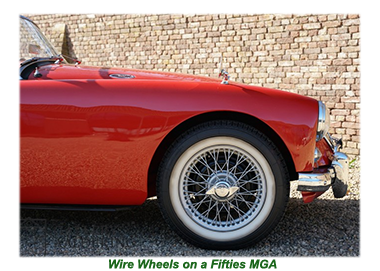 Cross plys earned their title from being constructed using superimposed textile cord layers that ran at alternate angles from the outer bead to the inner bead outwards.
Cross plys earned their title from being constructed using superimposed textile cord layers that ran at alternate angles from the outer bead to the inner bead outwards.
There is little or no contact between the sidewalls and tread in this configuration, making the structure more rigid while maintaining an almost identical aspect ratio.
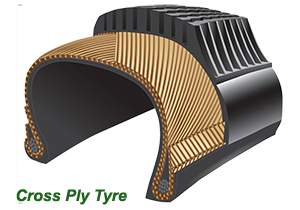 The more upmarket saloons and sports tourers of the Fifties and Sixties came fitted with radial tyres.
The more upmarket saloons and sports tourers of the Fifties and Sixties came fitted with radial tyres.
Radial tyres, although more expensive than cross plys, lasted much longer than cross-plys, were designed to allow the separation of sidewall and the crown, making sure that more of the tyres remained in better contact with the road, and for longer- making for dramatically improved handling at high speed.
Add to that the more than likely possibility that the chrome on the wheels are tarnished and will need to be sent off for replating, which again is an expensive process.
Despite the barriers, most restorers are very reluctant to give up on restoring their wire wheels and are prepared to pay what it takes to return their wire wheels to their original condition in anticipation of many years of owner’s pride.
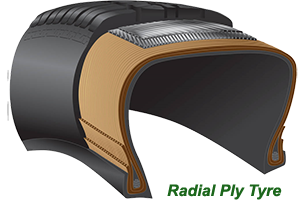 When it comes to tyres, the dilemma is much more straightforward. Even if the restoration vehicle has been in storage for a short period, all the rubber items on cars, especially their tyres, will have dried out unless stored indoors in a semi-humid setting.
When it comes to tyres, the dilemma is much more straightforward. Even if the restoration vehicle has been in storage for a short period, all the rubber items on cars, especially their tyres, will have dried out unless stored indoors in a semi-humid setting.
 This occurred bcause the large quantities of wax added to rubber during the production process to increase flexibility will eventually dry up.
This occurred bcause the large quantities of wax added to rubber during the production process to increase flexibility will eventually dry up.
 Even if the tyre looks healthy and has retained some tread, it will be very brittle and unsafe to be driven on.
Even if the tyre looks healthy and has retained some tread, it will be very brittle and unsafe to be driven on.
During a classic car renovation, wheels are among the first items to be removed and almost the last to be added back on.
The wheels and tyres should be stacked flat and stored away from any heat-absorbing surface.ub5
